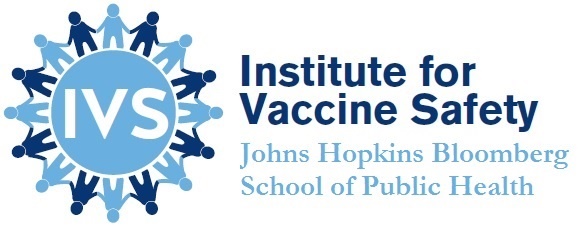Vaccine Preventable Diseases
Hepatitis A
ACIP Recs | Disease | Vaccine | References | VIS | WHO modules | Archives
Advisory Committee on Immunization Practices (ACIP) Recommendations
Infants
- All infants without contraindications should receive two doses of hepatitis A vaccine (trade names: Havrix®, Vaqta®) between 12-23 months of age. Doses should be given at least 6 months apart.
- Infants between 6-11 months of age traveling internationally to countries with high or intermediate endemnicity should also receive hepatitis A vaccine. Such children should still receive hepatitis vaccine between 12-23 months of age as normally recommended.
Children, Adolescents and Adults
- Hepatitis A vaccine is recommended for post-exposure prophylaxis for all persons at least one year of age [1-4].
For more information
Disease
Hepatitis A Virus (HAV) is a nonenveloped RNA picornavirus that enters the body through the mouth via the fecal-oral route of transmission and replicates in the liver. Infected persons excrete virus beginning 10-12 days after infection and continuing up to 3 weeks after appearance of symptoms. The incubation period of HAV ranges from 15 to 50 days. Common symptoms are generalizable to all acute viral hepatitis disease, such as fever, malaise, nausea, anorexia, jaundice and dark urine, and generally persist no more than 2 months, although relapses may occur. About 70% of infections in children under 6 years of age are asymptomatic. Rarely, infection results in fulminant hepatitis, a severe complication with mortality rates estimated to be up to 80% [1].
Vaccine
Hepatitis A vaccines is an aluminum hydroxide-adjuvanted formalin-inactivated whole virus vaccine. There are two hepatitis A vaccines used in the United States: Havrix®, which is prepared with the preservative 2-phenoxyethanol, and Vaqta®, which does not contain a preservative. These vaccines are available in pediatric and adult formulations.
There is also a hepatitis A-hepatitis B combination vaccine (trade name: Twinrix®) that is approved for use in persons over 18 years of age with an indication for both hepatitis A and hepatitis B vaccine. This vaccine should be administered according to the recommended schedule for hepatitis B vaccine in this age group [1].
Vaccine Effectiveness:
Hepatitis A vaccines are very immunogenic. Over 95% of adults and 97% of children and adolescents develop immunity within a month of the first dose of vaccine, and 96-100% of children and adults develop immunity after the second dose. In clinical trials, vaccine efficacy of Havrix® was estimated to be 94% and Vaqta® estimated to be 100% [1].
Vaccine Safety:
Self-limited, minor local reactions such as pain, redness or swelling are reported in approximately 20-50% of vaccine recipients. Mild systemic reactions such as fatigue, malaise and low-grade fever are reported in less than 10%. Besides very rare occurrences of anaphylaxis, no serious adverse events* have been shown to be caused by to hepatitis A vaccination. Severe allergic reaction (e.g. anaphylaxis) to a previous dose or vaccine component is a contraindication to further hepatitis A vaccination [1].
Contraindications and Precautions:
Severe allergic reaction (e.g. anaphylaxis) to a previous dose or vaccine component is a contraindication to further vaccination with hepatitis A vaccine. Current moderate to severe acute illness is a precaution to any vaccination [1].
Considerations in Pregnancy:
The safety of hepatitis A vaccination during pregnancy has not been determined; however, because hepatitis A is an inactivated vaccine, the theoretic risk to the developing fetus is expected to be low. Therefore, the risk associated with vaccination should be weighed against the risk for hepatitis A in pregnant women who might be at high risk for exposure to HAV [2].
* A serious adverse event is defined by the Food and Drug Administration (FDA) as resulting "in any of the following outcomes: Death, a life-threatening adverse event, inpatient hospitalization or prolongation of existing hospitalization, a persistent or significant incapacity or substantial disruption of the ability to conduct normal life functions, or a congenital anomaly/birth defect. Important medical events that may not result in death, be life-threatening, or require hospitalization may be considered serious when, based upon appropriate medical judgment, they may jeopardize the patient or subject and may require medical or surgical intervention to prevent one of the outcomes listed in this definition." This definition is found in Title 21, §312.32 of the Electronic Code of Federal Regulations.
References
1. Epidemiology and Prevention of Vaccine-Preventable Diseases. Washington D.C.: Centers for Disease Control and Prevention; 2015.
2. Fiore AE, Wasley A, Bell BP.
Prevention of hepatitis A through active or passive immunization: recommendations of the Advisory Committee on Immunization Practices (ACIP). MMWR Recommendations and reports : Morbidity and mortality weekly report Recommendations and reports 2006;55:1-23.
3. Nelson NP, Link-Gelles R, Hofmeister MG, et al.
Update: Recommendations of the Advisory Committee on Immunization Practices for Use of Hepatitis A Vaccine for Postexposure Prophylaxis and for Preexposure Prophylaxis for International Travel. MMWR Morbidity and mortality weekly report. Nov 2 2018;67(43):1216-1220. doi:10.15585/mmwr.mm6743a5.
4. Doshani M, Weng M, Moore KL, Romero JR, Nelson NP.
Recommendations of the Advisory Committee on Immunization Practices for Use of Hepatitis A Vaccine for Persons Experiencing Homelessness. MMWR Morbidity and mortality weekly report. Feb 15 2019;68(6):153-156. doi:10.15585/mmwr.mm6806a6.


